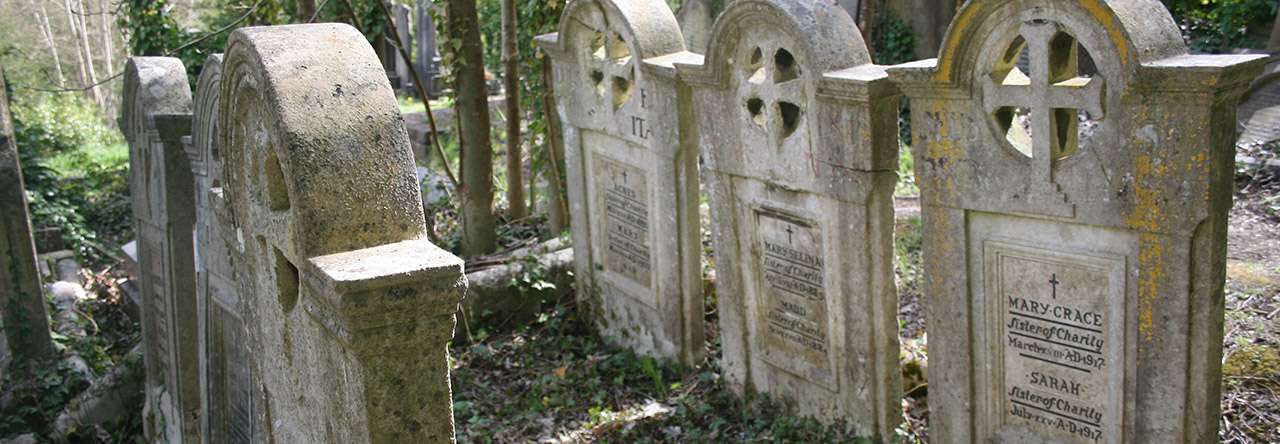With which inventions do you associate the above names? None of them appear on those ubiquitous lists of A Hundred Inventions which Changed the World, but they all made a significant impact in their own spheres.
Thomas Carr (1824-74)
Thomas Carr was responsible for The Disintegrator. A catalogue from the London Exhibition of 1862 describes this wonderfully named machine as “capable of pulverising various unfibrous materials, whether hard or soft, such as artificial manures, coprolites, zinc ores, rock asphalte, peat, cement, and fire clays.” Between fifty and two hundred tons per day of these materials could be reduced to a granular powder. Different size machines were sold around the world to grind guano rocks, bone, chemicals, and to pulp fruit.
While coarse grinding machines served the pharmaceutical and chemical industries, Carr wrote with particular affection of his grain milling machine:
“The Disintegrator is Contrasted with and Proved to Bear No Resemblance Whatever to Other Mills, Ancient or Modern…it is the Most Novel Discovery and Invention in Mills, the Most Versatile in its Applications, and for Many Purposes the Most Efficient Also, Since the Invention of the Flour-mill Stones Upwards of Thirty-three Centuries Since.” (Thomas Carr, Grain Milling, 1866.)
Circular discs of metal were set face to face and studded with alternating circles of projecting bars. The discs rotated in opposite directions and the grain passing through was shattered and reduced to flour. Carr estimated that one of his machines could do the work of twenty-seven pairs of millstones.
Thomas Carr is buried in Arnos Vale Cemetery, Bristol. At the base of his grave marker is a stone reproduction The Disintegrator.
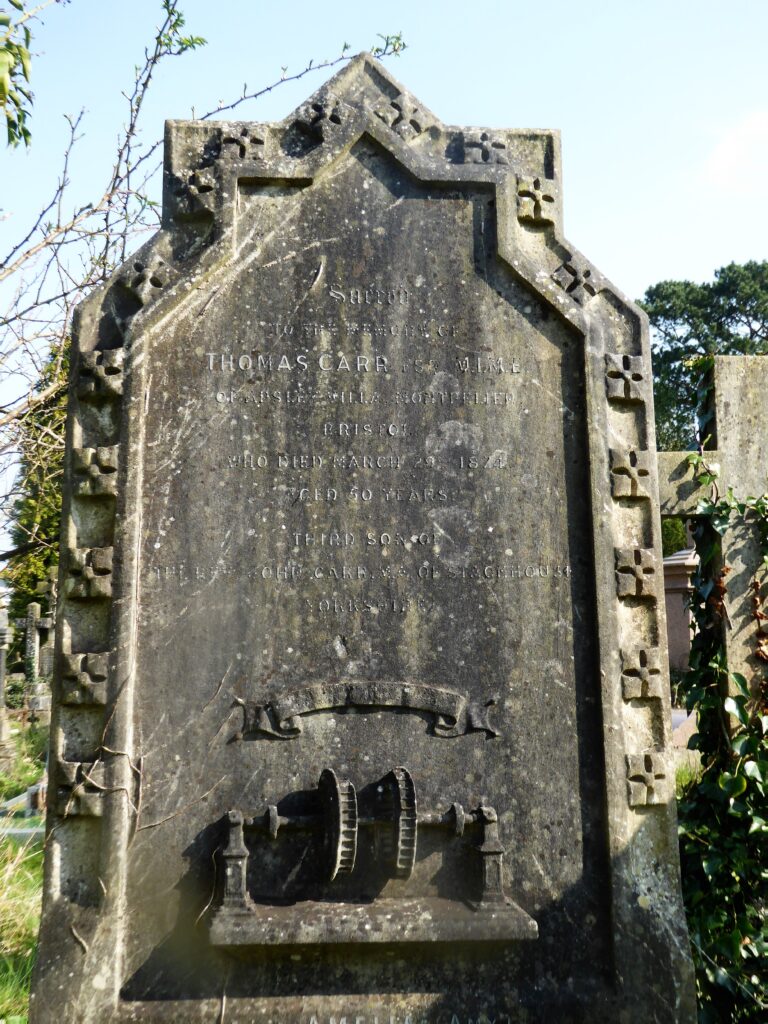
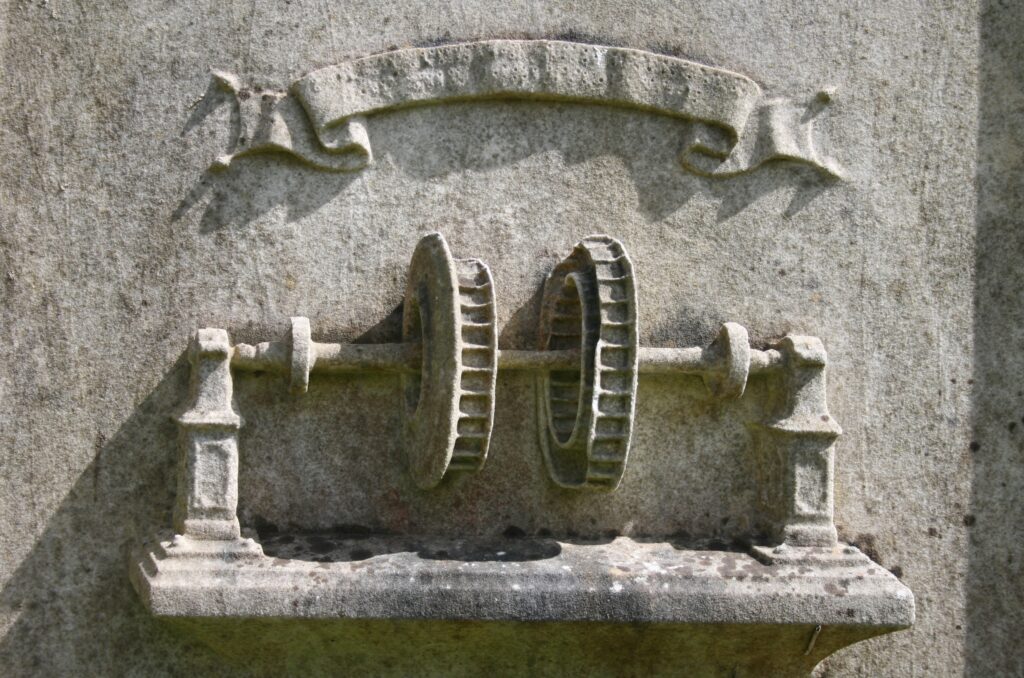
Thomas Gadd Matthews (1802-1860)
Also in Arnos Vale lies Thomas Gadd Matthews, another man with an enthusiasm for grinding things down. In 1840 he took out a patent for a machine which reduced wood, bark, and leaves to the fine powder used by dyers and tanners. His most successful product was made from indigo leaves imported from the West Indies. His customers boiled and fermented the powder he supplied to obtain the dyes used in the manufacture of clothing, particularly in the production of naval uniforms.
This must have been lucrative, for in addition to a house in Bristol and a summer villa in Portishead, Matthews bought shares in the newly formed Bristol General Cemetery Company and had a grade 2* listed tomb built there for himself and his wife. Since he was a member of the Church of England while she was a Congregationalist, the tomb was built straddling the consecrated and the unconsecrated parts of the cemetery so that they could be buried together but according to the rites of their respective churches.
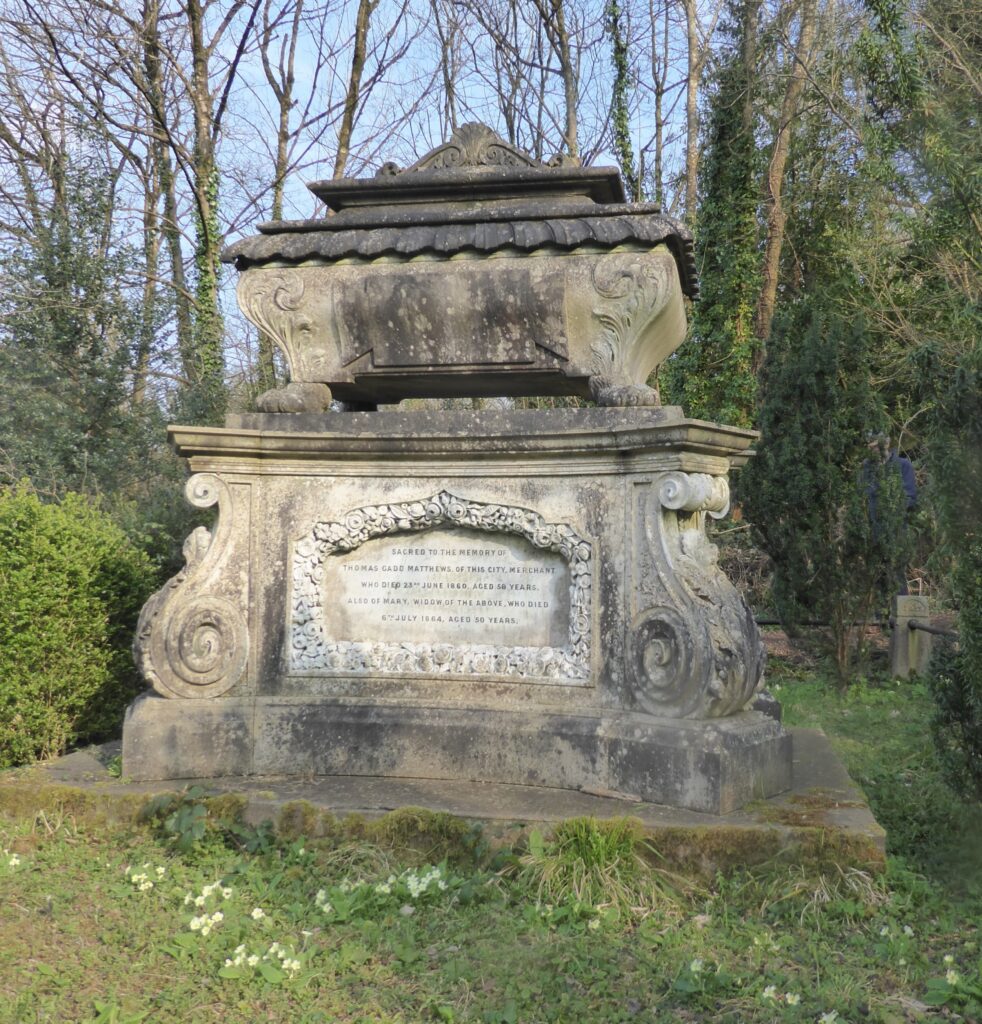
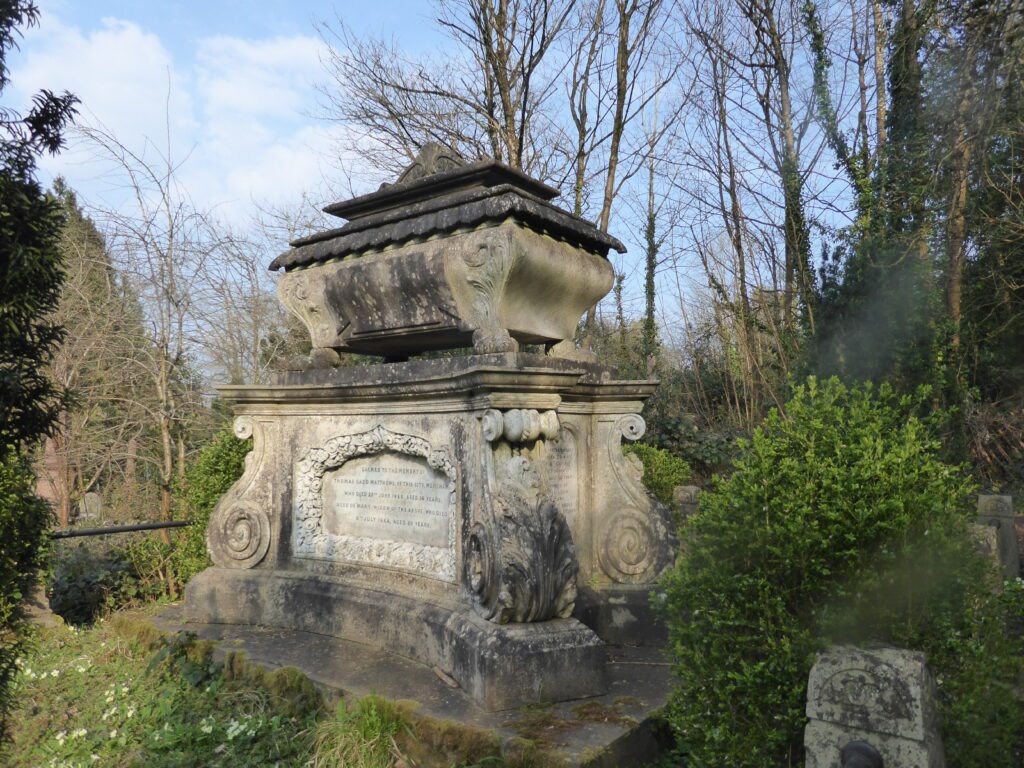

Robert Recorde (1510-1558)
Robert Recorde was a Welsh physician and mathematician.
In 1557 he wrote The Whetstone of Witte, a treatise on algebra, while composing which he invented the equals sign. He realised that he could avoid the constant repetition of the words “is equal to” by replacing them with two horizontal parallel lines, chosen “bicause noe 2 thynges can be more equalle,” for if necessary, they could be drawn all the way around the globe and still not join together.
But in addition to practising medicine and teaching mathematics, Recorde had also acted as Controller of the Royal Mint. In this capacity he refused to divert money to support English troops engaged in suppressing the Western Rebellion, a rising in Cornwall and Devon against the Enclosures, the poll tax on sheep, religious change, and the threat to the Cornish language. As a result, William Herbert, the first Earl of Pembroke, accused him of treason. When Recorde in turn accused Herbert of malfeasance in his role as Commissioner of the Mint, Herbert conducted a successful libel suit and Recorde was faced with a massive fine. Unable to pay it he was arrested for debt and died in the King’s Bench Prison in Southwark.
His burial place, probably an unmarked, communal grave, is unknown but there is a memorial to him in St. Mary’s church in his native Tenby.
The equals sign was not generally adopted until after 1700.
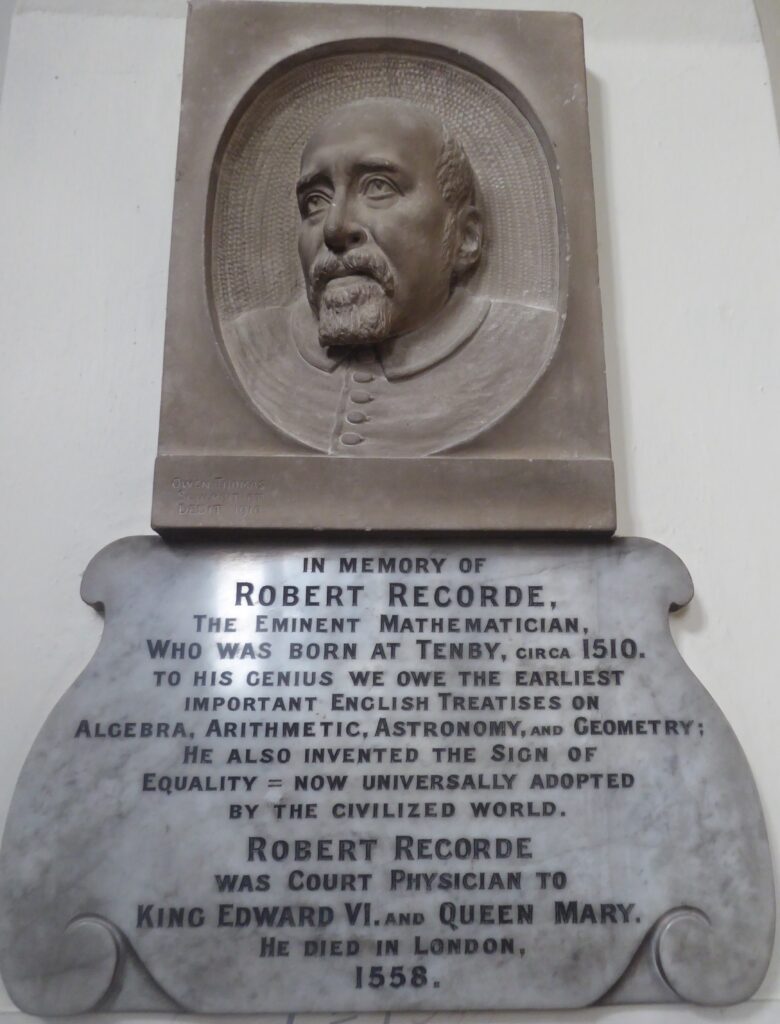
Richard “Stoney” Smith (1836-1900)
I came across Richard “Stoney” Smith serendipitously in Highgate. As his gravemarker details, he came from Stone in Staffordshire, later moving to Macclesfield in Cheshire, and then to London. Born in the Mill House, he became the third generation of his family to work as a flour miller.
Traditionally the wheatgerm had been discarded when making flour to prevent the bread from going rancid. Stoney perfected a method of steam cooking the wheatgerm, to prevent rancidity, without destroying its nutrients. He then blended it back into the flour, resulting in a brown bread rich in vitamin B from the germ, with a unique nutty taste, and without the grittiness of other wholemeal breads.
In 1887 he trademarked his new product as Smith’s Patent Germ Flour. He launched a national competition to find a new name for it – perhaps the connotation of “germ” seemed ill advised in association with a food product. The £25 prize which he offered for the winning entry was won by an Oxfordshire schoolmaster who proffered “Hovis” from the Latin phrase hominis vis (strength of man).
Such was the popularity of Hovis loaves that by the 1930s pubs and teashops frequently displayed signs advertising “Teas with Hovis.” The company coined the catchphrase “Don’t just say Brown, say Hovis,” as part of a successful advertising campaign. Even more profitable was the nostalgic television advert launched in 1973: set in the early twentieth century, a boy pushes a delivery bike laden with Hovis loaves up a steep cobbled hill as Dvorak’s New World symphony, rearranged for brass, reaches a crescendo. The loaves delivered, the boy free wheels back down the hill as a voice-over, the boy in old age, reminisces:
I knew baker’d have the kettle on and doorsteps of hot Hovis ready. ‘There’s wheatgerm in that loaf,’ he’d say, ‘Get it inside you boy, and you’ll be going up that hill as fast as you came down.’
The advert ends with the aphorism, “Hovis, as good for you today as it has always been.” Repeatedly voted the nation’s favourite advert, it was digitally remastered and rereleased in 2019 once again boosting sales while delighting its many fans. Sad that Stoney was not around to see it.

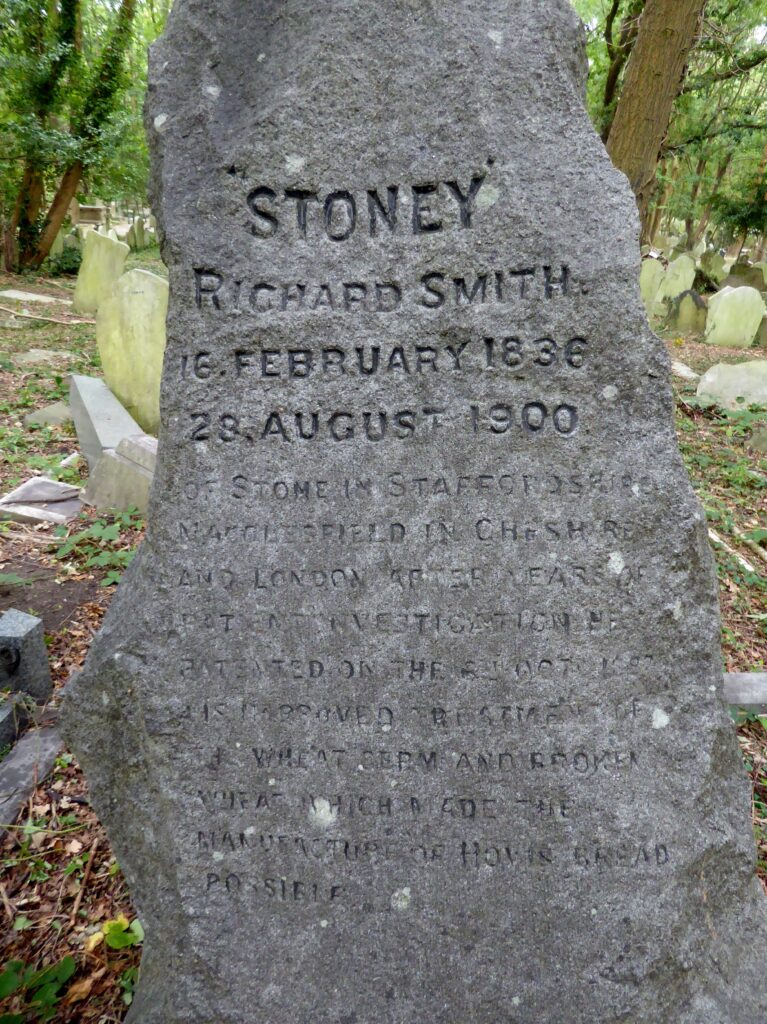

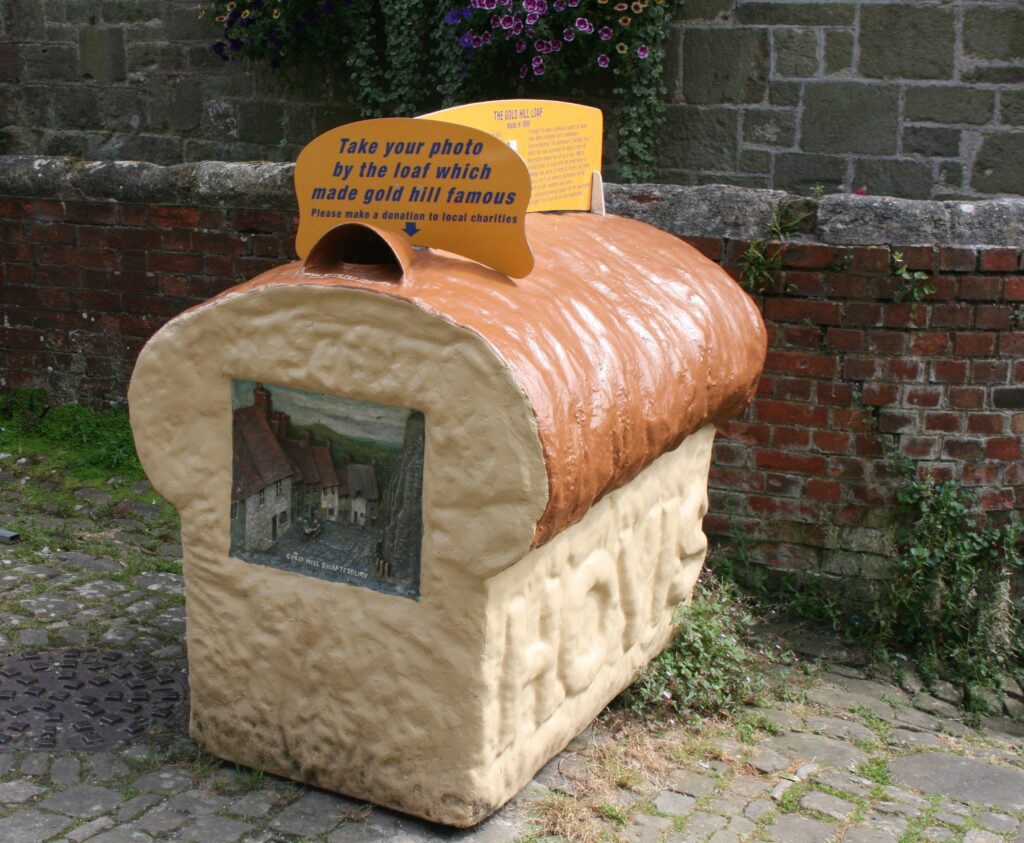
Jethro Tull (1674-1741)
Jethro Tull is probably the most well-known of these inventors, forever rubbing shoulders with Turnip Townshend in school texts on the Agricultural Revolution, and further immortalised by the eponymous rock band. The latter were given the name by their agent, a history graduate, just at the time when they were finding fame with a week’s residency at London’s Marquee club.
At his Berkshire farm, the original Jethro Tull invented the mechanical horse drawn seed-drill, acclaimed as the first agricultural machine with moving parts. Seed had for centuries been broadcast by hand leading to much waste. Tull devised a system whereby the seed was stored in hoppers, and fed by rotating, grooved cylinders into a funnel which directed it into furrows at the correct depth and space. The furrows were dug by a drill plough moving in front. A harrow moved at the rear to cover the seed. Later Tull also devised a horse drawn hoe to remove weeds and loosen the soil around crops preventing compaction.
Tull’s gravestone, in St. Bartholomew’s churchyard, Lower Basildon, Berkshire, is a replacement for the original, but it too has become difficult to read on account of the lichen. Fortunately the delightful bas relief of a horse drawn seed drill can still be distinguished.

JETHRO TULL,
Pioneer of Mechanised Agriculture,
Author of Horse-Hoing Husbandry.
Baptised in this Church
30th March 1674
Buried here 9th March 1740
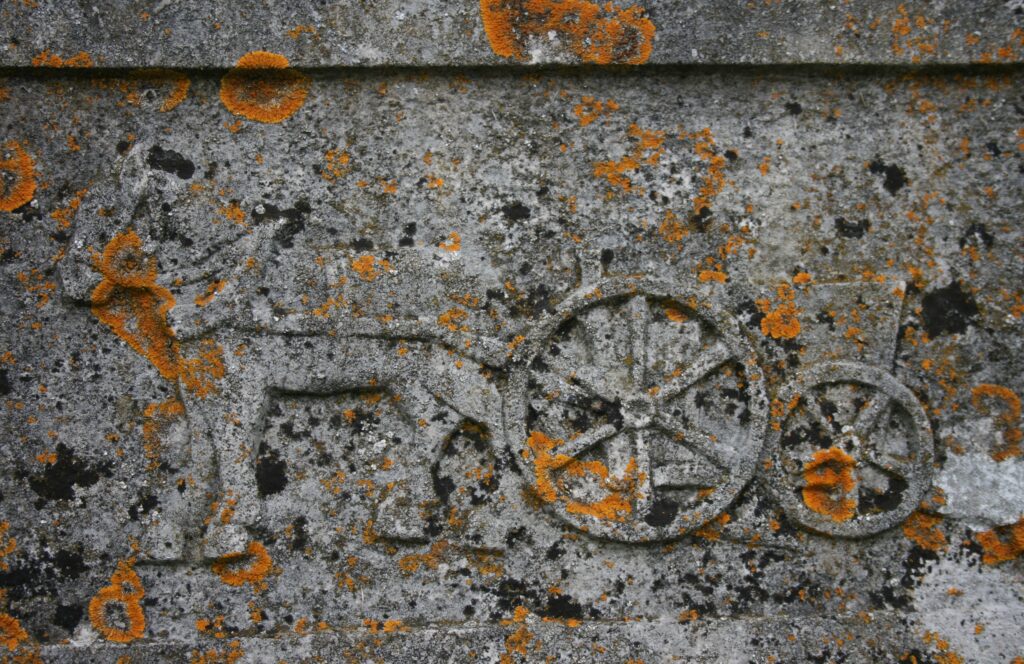
Frederick Wolseley (1837-1899)
When he was seventeen years old the Irish born Frederick Wolseley left home for Australia where he worked on a sheep station near Melbourne. Subsequently he acquired extensive properties of his own, and in 1884 he took out a patent for his invention, the first sheep shearing machine. The device had a power source originally driven by a horse gin, later replaced by a stationary engine, which was connected by belt, pulley and drive shaft to the handpiece held by the shearer. It clipped wool relatively quickly, and at its full length, doubling or tripling its value. And while traditional shears had clipped the fleece it into small pieces Wolseley’s machine removed the whole fleece. From the sheep’s point of view, it had the added advantage of reducing the number of cuts they received. Wolseley established the Wolseley Sheep Shearing Company in Sydney, and opened a branch in Birmingham, England.
Herbert Austin joined Wolseley’s company as chief engineer, taking over the management of the company when Wolseley resigned owing to ill-health in 1894. Two years later Austin began to design cars alongside the sheep shearing machines to stabilise a business at risk of seasonal fluctuations. This sideline was soon abandoned in Australia, but Austin purchased the car building activities of the business and moving to England established the Austin Motor Company at Longbridge near Birmingham. There he produced some of Britain’s first cars, still bearing the Wolseley trademark, so that for most of us the name is more associated with the car than with Wolseley’s own invention. In 1922 the incomparable Austin 7 also emerged from Longbridge, but that is another story.
Wolseley visited England for cancer treatment in 1894, and never returned to Australia. Dying in Surrey in 1899 he was buried at Elmers End Cemetery in SE London.
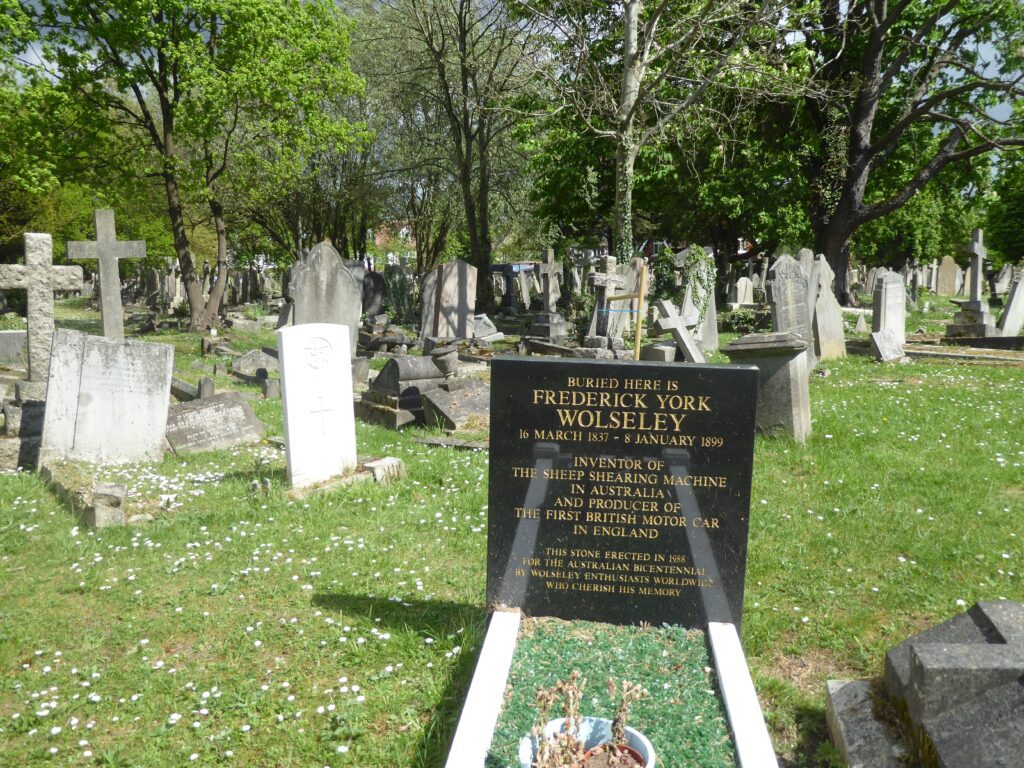

Gods of small things only maybe, but they have all left their mark.
